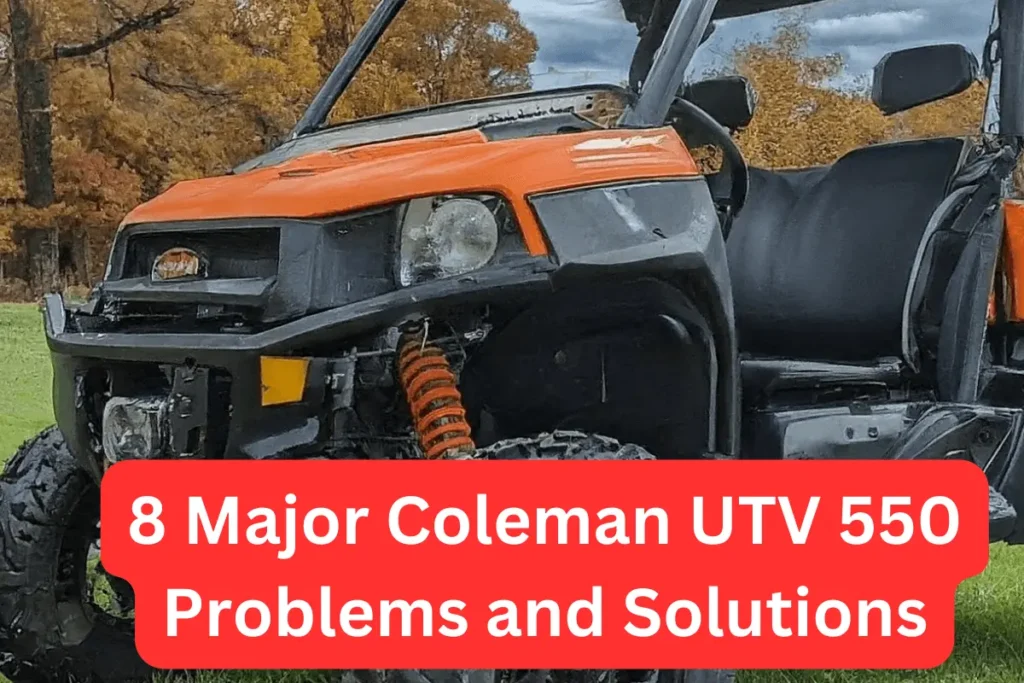The Polaris Ranger 800 XP is a popular side-by-side utility vehicle known for its power and versatility. But like other vehicles, its owner faces some problems with it.
The most common Polaris Ranger 800 XP problems are transmission issues, clutch problems, EPS issues, starting issues, fuel pump problems, front differential problems, lock differential problems, power steering issues, and battery problems.
Remember, these issues are also found in the 2012 model of the Polaris Ranger 800 XP. So stay with us to know the solutions to these problems.
Most common Polaris Ranger 800 XP problems
Now we are going to discuss the 9 major issues of RZR 800 XP with their easy solutions. You can gain your knowledge by reading Polaris Ranger 700 XP problems.
1. Polaris Ranger 800 XP transmission problems

The transmission in your Ranger is responsible for shifting gears and transferring power from the engine to the wheels. When it encounters problems, it can affect the vehicle’s performance and reliability.
One common issue with the Polaris Ranger 800 XP transmission is slipping gears. This occurs when the transmission fails to engage properly, causing the vehicle to lose power or acceleration.
Various factors, including worn clutch components, low transmission fluid levels, or damaged transmission bands can cause slipping gears.
Another issue you might encounter is rough shifting. This occurs when the transmission shifts gears harshly or hesitates between shifts.
Dirty or contaminated transmission fluid, faulty shift solenoids, or internal transmission damage can cause rough shifting.
Additionally, you might notice strange noises coming from the transmission, such as grinding, whining, or clunking sounds. These noises can indicate problems with the transmission gears, bearings, or other internal components. If ignored, these noises can lead to further damage and more expensive repairs.
To address transmission problems with your Polaris Ranger 800 XP, it’s essential to diagnose the issue accurately. Make sure your transmission fluid is at the correct level and in good condition. If it’s low or dirty, you’ll need to flush the transmission fluid and replace it with fresh fluid according to the manufacturer’s recommendations.
If the transmission fluid is fine, you may need to inspect the clutch components, shift solenoids, and other transmission parts for wear or damage. Depending on the severity of the issue, you might be able to repair the transmission yourself or seek professional assistance from a certified Polaris technician.
In some cases, transmission problems with the Polaris Ranger 800 XP may require more extensive repairs or even a complete transmission replacement. It’s essential to address these issues promptly to prevent further damage to your vehicle and ensure safe operation on and off the road.
Regular maintenance, such as checking the transmission fluid level, inspecting for leaks, and following the manufacturer’s recommended service intervals, can help prevent transmission problems and prolong the life of your Polaris Ranger 800 XP.
By staying proactive and addressing any issues promptly, you can keep your vehicle running smoothly and enjoy your offroading with confidence.
2. Polaris Ranger 800 XP clutch problems
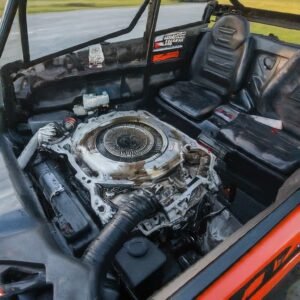
Clutch issues can be frustrating, but understanding the potential causes and solutions can help you get back on track.
Firstly, let’s talk about what the clutch does. In simple terms, the clutch in your Polaris Ranger 800 XP is responsible for transferring power from the engine to the transmission. It allows you to smoothly engage and disengage the engine power to change gears or come to a stop.
Now, onto the problems you might be facing. One common issue is slippage, where the clutch fails to fully engage, causing a loss of power and acceleration. This can happen due to wear and tear on the clutch components over time, or it could be due to incorrect adjustment or lubrication.
Another problem you might encounter is clutch sticking or binding, where the clutch doesn’t disengage properly, making it difficult to shift gears or causing the engine to stall when coming to a stop. This could be caused by dirt, debris, or corrosion interfering with the clutch mechanism.
So, what can you do about these problems? First, it’s essential to regularly inspect and maintain your clutch system. Make sure the clutch cable is properly adjusted according to the manufacturer’s specifications. Clean any dirt or debris from the clutch housing and components, and ensure they are properly lubricated.
If you’re still experiencing issues, it might be time to replace worn clutch components such as the clutch plates, springs, or bearings. You can either do this yourself if you’re comfortable with mechanical work or take your Ranger to a qualified mechanic or dealership for professional assistance.
Read more about the Polaris Ranger Clutch problems
3. Polaris Ranger 800 XP EPS problems
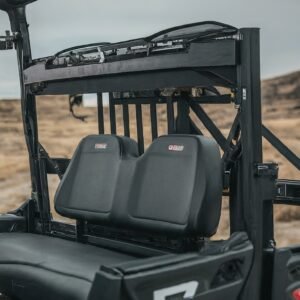
If you’re facing issues with your Polaris Ranger 800 XP EPS, you’re not alone. Despite being reliable vehicles, they can encounter problems over time. Let’s explore some common issues and potential solutions:
- Power Steering Failure: One of the significant problems with the Polaris Ranger 800 XP EPS is power steering failure. If you’re experiencing difficulty in steering or notice unusual noises when turning, it could be due to a malfunction in the power steering system. Check the power steering fluid levels and ensure there are no leaks in the system. If the problem persists, you may need to inspect and possibly replace the power steering pump or other components.
- Electrical Issues: Another prevalent concern is electrical problems. This could manifest as issues with starting the vehicle, malfunctioning lights, or erratic behavior of electronic components. Begin troubleshooting by checking the battery for proper voltage and connections. Inspect the wiring harness for any signs of damage or corrosion. Sometimes, a faulty relay or sensor can also cause electrical issues.
- Engine Performance: Some users report issues with the engine performance of the Polaris Ranger 800 XP EPS. This might include rough idling, stalling, or lack of power. Begin by inspecting the air filter and ensuring it’s clean and properly installed. Check the fuel system for any clogs or leaks that could affect fuel delivery. Additionally, consider servicing the spark plugs and performing a thorough inspection of the ignition system.
- Transmission Problems: Transmission issues can also arise, leading to difficulty in shifting gears or unusual noises during operation. Start by checking the transmission fluid levels and inspecting for any leaks. If the fluid appears dirty or burnt, it may be necessary to flush the transmission and replace the fluid and filter. Additionally, consider adjusting the clutch if you notice any slipping or engagement problems.
- Suspension and Ride Quality: Some users may notice issues with the suspension system or overall ride quality of the Polaris Ranger 800 XP EPS. This could include excessive bouncing, uneven ride height, or poor handling. Inspect the shocks and springs for any signs of damage or wear and replace them if necessary. Also, check the tire pressure and condition to ensure optimal traction and ride comfort.
4. Polaris Ranger 800 XP starting problems

If you’re experiencing starting problems with your Polaris Ranger 800 XP, there could be a few potential reasons why this is happening. Let’s break it down:
- Battery Issues: The most common reason for starting problems in any vehicle is often related to the battery. If your battery is old, weak, or not properly charged, it may struggle to provide enough power to start the engine. Make sure the battery terminals are free of corrosion and tight. If the battery is several years old, it might be time for a replacement.
- Fuel Problems: Another possibility is that there might be an issue with the fuel system. If the fuel filter is clogged or the fuel pump is malfunctioning, it can prevent the engine from getting enough fuel to start. Make sure there’s enough fuel in the tank and that it’s not contaminated with water or debris.
- Spark Plug Troubles: The spark plugs are responsible for igniting the fuel-air mixture in the engine. If they are worn out or fouled, it can lead to difficulty starting the engine. Inspect the spark plugs for signs of wear or build-up and replace them if necessary.
- Ignition System Malfunction: The ignition system, including the ignition coil and starter, can also be the culprit. If there’s a problem with these components, it can prevent the engine from starting smoothly. Check for any loose connections or damaged wires in the ignition system.
- Engine Compression: Low compression in the engine cylinders can also cause starting issues. This could be due to worn piston rings or valves, leading to poor engine performance. A compression test can help diagnose this problem.
- Cold Weather Starting: In colder climates, engines may struggle to start due to thickened oil and other cold-related issues. Using the appropriate grade of oil for the temperature conditions can help alleviate this problem.
- Electrical Problems: Sometimes, starting issues can be traced back to electrical problems such as faulty wiring, a malfunctioning ignition switch, or a bad solenoid. A thorough inspection of the electrical system may be necessary to identify and rectify these issues.
Also, read Polaris Ranger 900 XP problems.
5. Polaris Ranger 800 XP fuel pump problems
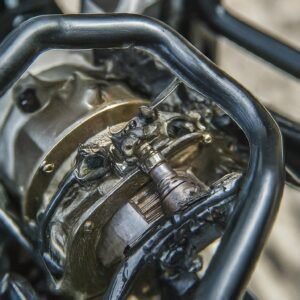
When it comes to the Polaris Ranger 800 XP, fuel pump problems can be quite frustrating for users. Let’s discuss them in detail.
- Understanding the Fuel Pump: The fuel pump in your Polaris Ranger 800 XP is like a heart, pumping fuel from the tank to the engine. It’s a vital part of your vehicle’s functioning.
- Symptoms of Fuel Pump Problems: If you’re experiencing issues with your Ranger, such as difficulty starting, stalling, or sputtering while driving, it could indicate a problem with the fuel pump.
- Causes of Fuel Pump Problems:
- Contaminated Fuel: Sometimes, dirt or debris can get into the fuel system, causing clogs and affecting the fuel pump’s performance.
- Wear and Tear: Like any mechanical part, the fuel pump can wear out over time, especially if it’s been subjected to rough terrain or heavy use.
- Electrical Issues: Problems with the electrical connections or wiring can also lead to fuel pump issues, preventing it from functioning properly.
- Diagnosing the Problem: If you suspect a fuel pump issue, it’s essential to diagnose it correctly. This may involve checking the fuel pressure, inspecting for leaks, and testing the electrical components.
- Fixing the Problem: Depending on the severity of the issue, fixing a fuel pump problem can vary. It might involve simply cleaning out the fuel system, replacing the fuel pump, or repairing any electrical faults.
- Preventative Measures: To avoid future fuel pump problems, it’s crucial to:
- Use High-Quality Fuel: Opt for clean, high-quality fuel to prevent contamination.
- Regular Maintenance: Keep up with regular maintenance schedules, including fuel filter replacements and system inspections.
- Be Gentle: Drive carefully and avoid rough terrain whenever possible to reduce wear and tear on the fuel pump and other components.
- Seeking Professional Help: If you’re unsure about diagnosing or fixing the issue yourself, it’s best to seek help from a qualified mechanic or service center. They have the expertise and tools to address fuel pump problems effectively.
6. Front Differential Problems
To identify front differential problems, look out for specific symptoms. Common signs include grinding or clunking noises when turning, difficulty in steering, and vibrations at certain speeds.
If you notice any of these symptoms, it’s crucial to inspect the front differential immediately to prevent further damage.
Solutions
Once you’ve identified an issue, the next step is finding a solution. Here’s a step-by-step guide:
- Inspect the Differential Fluid: Low or dirty fluid can cause problems. Check the fluid level and quality, and replace it if necessary.
- Check for Wear and Tear: Inspect the differential components for any signs of wear, such as broken gears or worn-out bearings. Replacing these components can resolve many issues.
- Professional Inspection: If the problem persists, it might be best to seek help from a qualified mechanic. They can perform a detailed inspection and diagnose any underlying issues.
7. Locking Differential Problems
The locking differential in the Polaris Ranger 800 XP is designed to enhance traction by locking both wheels of an axle together, ensuring both wheels turn at the same rate.
However, issues can arise. Common problems include the differential not engaging or disengaging correctly, unusual noises, and differential fluid leaks.
These issues can be caused by mechanical wear and tear, low or dirty differential fluid, or electrical problems affecting the actuator.
Diagnosing the Issues
Diagnosing locking differential issues is essential, and a visual inspection is needed. Check for any signs of fluid leaks around the differential housing.
Listen for unusual noises when engaging or disengaging the differential. If the differential is not working, it could be an electrical issue, such as a blown fuse or a faulty actuator. Using a diagnostic tool can help pinpoint specific electrical problems.
Effective Solutions
Addressing these problems involves a few steps. Firstly, ensure the differential fluid is clean and at the correct level. If the fluid is dirty, replace it per the manufacturer’s recommendations.
For mechanical issues, inspect the differential components for wear and replace any damaged parts. If the problem is electrical, check the wiring and replace faulty components, such as actuators or fuses. By following this steps you can easily get rid from the Polaris Ranger 800 locking differential problems.
8. Power Steering Problems

One of the most frequent issues with the Polaris Ranger 800 XP is a loss of power steering assist. You might notice the steering becoming unusually heavy, especially at lower speeds.
This can be caused by a faulty steering torque sensor or issues with the electronic power steering (EPS) system.
Another sign of trouble can be unusual noises when turning the steering wheel, which might indicate a problem with the steering motor or gear.
Solutions
Fortunately, there are solutions to these common issues. If you’re facing a loss of power steering assist, the first step is to check the EPS fuse and wiring connections.
A blown fuse or a loose connection can often be the culprit. If the fuse and connections are intact, inspecting the steering torque sensor is next. Replacing a faulty sensor can restore proper function.
It’s advisable to check the steering motor and gear for unusual noises. Lubricating the gear or replacing the engine might be necessary if the noise persists.
Regular maintenance, such as keeping the components clean and ensuring all connections are secure, can prevent many of these issues.
9. Battery Problems
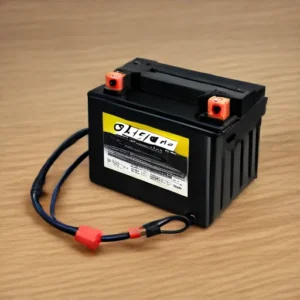
The most frequent issues with the Polaris Ranger 800 XP battery include:
- Battery not holding charge: This could be due to an old or faulty battery, poor connections, or an electrical drain.
- Difficulty starting: Often linked to a weak battery, corroded terminals, or a malfunctioning starter.
- Battery draining quickly: Excessive power consumption, electrical shorts, or a failing alternator can be the culprits.
Identifying the Causes
To address these issues effectively, you need to identify the root cause:
- Check the battery age. Battery life typically ranges from 3 to 5 years. If yours is older, it might be time for a replacement.
- Inspect connections: Ensure that the battery terminals are clean and tightly connected. Corrosion can impede the flow of electricity.
- Test for parasitic drain: Use a multimeter to check for any unexpected power draw when the vehicle is off.
- Alternator check: Ensure the alternator functions properly by measuring the voltage output. When the engine is running, it should be between 13.5 and 14.5 volts.
Solutions
Once you have identified the cause, you can take appropriate action:
- Replace the battery: If it is old or damaged, replacing it with a new one can resolve many issues.
- Clean and tighten connections: Use a wire brush to clean corroded terminals and ensure all connections are secure.
- Fix electrical issues: If there is a parasitic drain, locate and repair the faulty component causing the drain.
- Alternator repair or replacement: If the alternator is not charging the battery properly, it may need to be repaired or replaced.
Conclusion
While the Polaris Ranger 800 XP is a reliable and capable utility vehicle, it is important to be aware of the potential problems that can arise. By regularly inspecting and maintaining your vehicle, as well as promptly addressing any issues that arise, you can ensure a long and trouble-free ownership experience. Remember to consult a professional if you encounter any major problems that you are unable to resolve on your own.

